Last updated on Oct 15, 2025
How to Write Better: 6 Ways To Level Up Your Writing
Martin Cavannagh
Head of Content at Reedsy, Martin has spent over eight years helping writers turn their ambitions into reality. As a voice in the indie publishing space, he has written for a number of outlets and spoken at conferences, including the 2024 Writers Summit at the London Book Fair.
View profile →Writing isn't a talent you're born with. The techniques for achieving clarity, tone, and brevity in your work are all skills you build over time. Those who do turn out an amazing piece of writing the first time they put pen to paper will probably have prepared themselves for success — even if they haven't been doing it consciously.
To help you purposefully take your skills to the next level, here are six ways to write better:
1. Know your medium and its purpose
Writing is, first and foremost, a form of communication. A piece of text may communicate a story, an idea, a feeling, or reasoning. As such, the easiest thing you can do to write better is to clarify the purpose of your work:
- Why are you writing this?
- Who are you writing for?
- Is it for entertainment purposes?
- Are you trying to inform the audience of something?
The answers to these questions have a bearing on the way your text should be written. And though the best way to learn about the various kinds of writing is simply to read a lot, here are some common types and their characteristics.
Creative writing
As the name suggests, creative writing is about imagined events, characters, and settings. The main purpose of a creative, fictional piece is to tell a story that resonates with readers. As a result, creative writing is often judged based on its character development, pacing and plot, and the writer’s ability to immerse readers into an imaginary world.
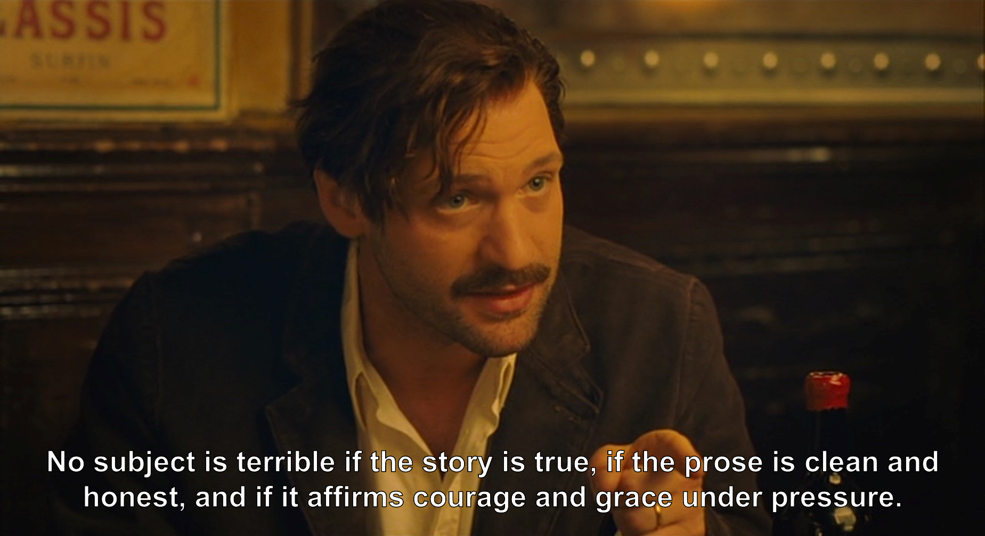
You might also have guessed that the beauty of the prose is more important to this kind of writing. Of course, the level of attention paid to the prose style differs depending on the format (e.g., fiction that's only a few hundred works like flash fiction, short stories, novels, or poetry) and different kinds of genres (e.g., mystery, fantasy, literary fiction, etc.) of each specific piece. But generally, you want to develop your distinct authorial voice if you want to improve your creative writing.
For some creative writing practice, check out Reedsy’s short story contest, which comes with a weekly cash prize of $250!
Creative nonfiction
Technically a sub-field of creative writing, creative nonfiction (CNF) uses the storytelling techniques and literary devices of fiction writing to recount real stories — think investigative news stories, personal essays, memoirs, and biographies. For obvious reasons, writing good CNF relies less on creating a world and imaginative plotting, though the author’s voice is just as important as it is for fiction.
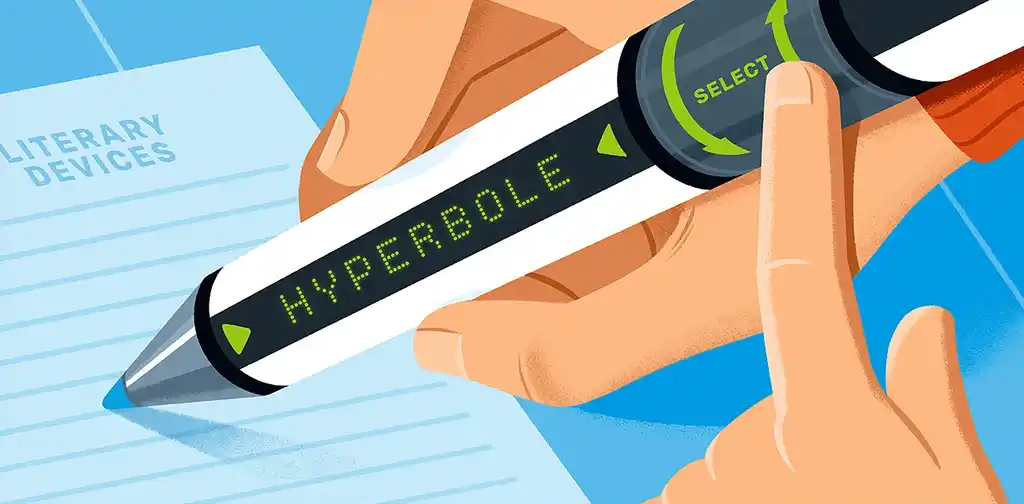
FREE RESOURCE
Literary Devices Cheatsheet
Master these 40+ devices to level up your writing skills.
Marketing writing
This refers to any kind of text used to build a brand image or sell something. Marketing material includes things like taglines, blog content, website copy, and product descriptions.
The purpose is to provide information about the product or service, hit the right keywords so that consumers can find them online, convince the reader to buy the product, and reinforce brand image. To appeal to a broad base of customers, this type of writing tends to be more conversational and digestible than the previous ones.
Academic writing
Academic writing — which takes the form of essays, journal articles, and books — is highly specialized in both content and format. This branch of writing asks for factual accuracy (along with precise referencing and indexing), sharp analysis, and oftentimes methodological explanation.
The purpose is not only to relay information but also to engage and derive meaning from it, so the writing must be to the point, logical, and persuasive.
2. Soak in the wisdom of other writers
Once you’ve narrowed down the kind of writing (and their related set of skills) that you want to master, you’ll have to learn. And as Annie Proulx’s oft-repeated quote about writing goes: “Writing comes from reading, and reading is the finest teacher of how to write.”
Learn to read like a writer
Though it sounds obvious, you need to read a lot, and you need to read critically. Think about the purpose of each piece you come across and trace along to see how the author accomplished it. What made their delivery so effective?
It won’t always be obvious what was so good about a piece of writing, but with time, you’ll begin to notice certain techniques at work. It’s like watching a sport you’re not familiar with — the more you observe it, the clearer the rules become. And once you know the rules, you can play along.
To help you fill up your reading list, here are some of our recommendations:
- 100 Books to Read Before You Die (blog post)
- The 60 Best Nonfiction Books of All Time (blog post)
- 60+ Best Poetry Books of All Time (blog post)
- The 40 Best Books About Writing (blog post)

GET ACCOUNTABILITY
Meet writing coaches on Reedsy
Industry insiders can help you hone your craft, finish your draft, and get published.
3. Turn yourself into an idea factory
Now, let’s go to the part where you actually prepare for a specific writing assignment. Students and professional writers may be assigned a remit by teachers, employers, or clients (if they're a freelancer), while others may have a novel or short story to write. Regardless of what task you have, it’s useful to start from a solid central idea. From there, you can tease out some smaller points and form a direction for the piece before you write — let’s look at some methods that might help you do this.
Freewrite your thoughts
Freewriting is exactly what it sounds like: set a timer for 10 or 15 minutes and just write freely. Jot down some bullet points or sentences about your topic which ideally address these questions:
- What do you already know that might help?
- How can you approach the question with depth?
- What related details should you include?
- What do you need to do some more research on?
This exercise is helpful when you’re carrying out your initial research, since you can note down important things all in one place. You also might find yourself noticing links between certain points with everything laid out, some of which may become crucial parts of your argument or the plot of your story.
Brainstorm
If you prefer something more organized or visual, you can brainstorm. It’s pretty straightforward: start with your main topic in the middle and draw out branches of relevant points or facts to develop your thoughts. This is a great way to construct extended arguments or plotlines, giving you a sense of direction before you start putting pen to paper.
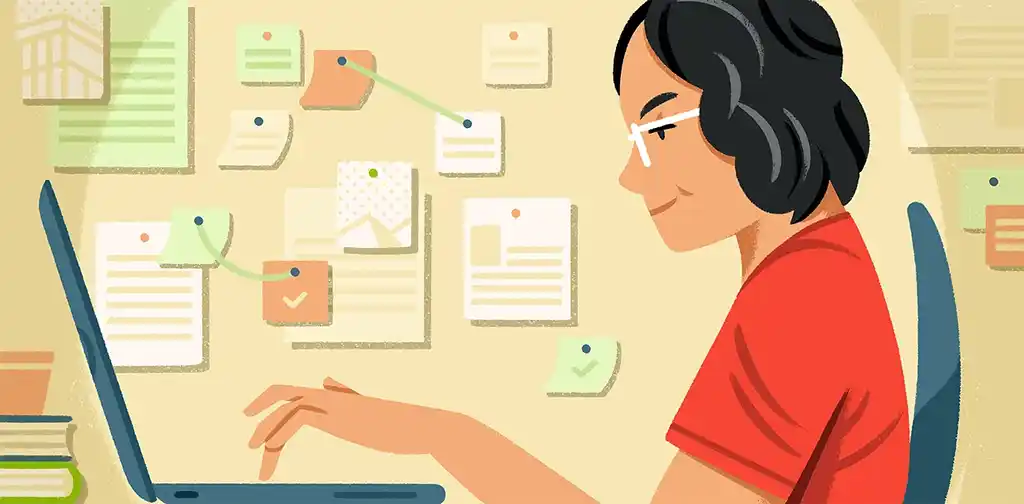
And finally, always make sure you write down your ideas. Some writers carry around a notebook, other keep notes on their phone — so long as you have a way to look back at your ideas, you're in a good place. When it comes to the part where you have to write something, you can refer back to your notes and start piecing things together.
4. Always start with some sort of plan
Take your prep work one step further by writing an outline. An outline can look different depending on what kind of writing you’re working on. To give you some ideas, here are a couple of examples.
Novels. A popular story structure — like the three-act structure, which takes place in three parts — can be used to help you map out the events of your story so that there is a complete arc to compel the audience to keep reading.
Head on to our post on how to outline a novel for more advice on building the plot, characters, and the world of your story!
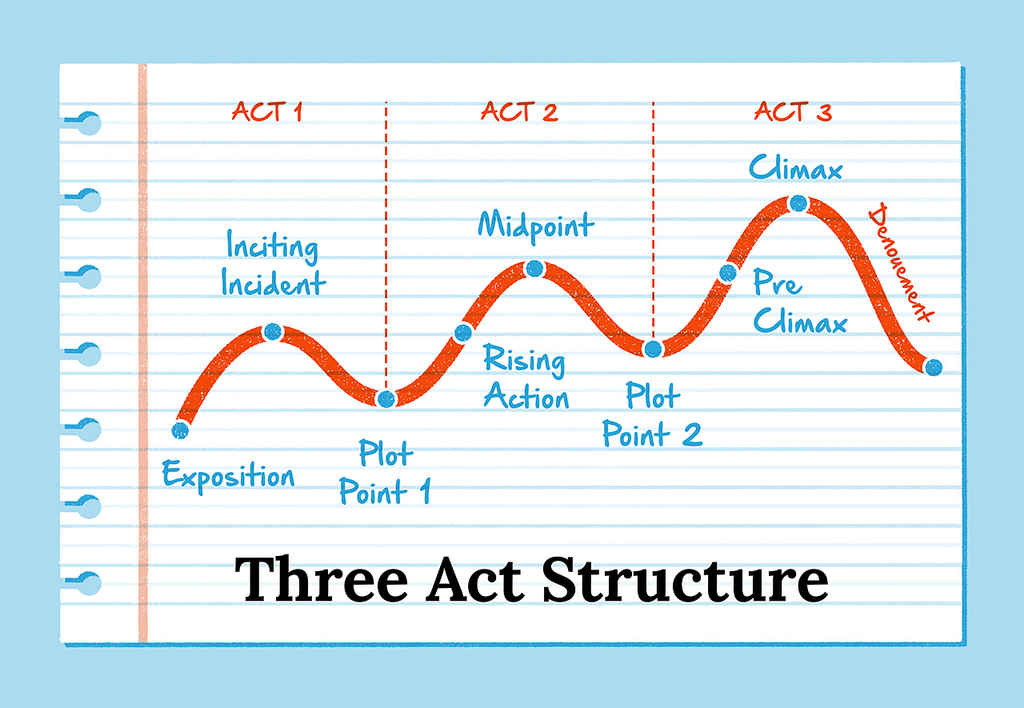
Nonfiction books. A book outline is actually a crucial part of a nonfiction book proposal — it’s how a publisher learns more about your book idea before they invest in them. A complete outline comes in the form of a chapter-by-chapter summary, though you can begin with potential chapter titles and bullet points first.
Need help knowing how to develop your book idea? Our post offers some useful insights on outlining a nonfiction book.
Essays. Summarize each argument you plan to make with a single sentence. Then arrange them in your preferred order. This way, you can see whether the central line of argument works or not.
Blog articles. Write down potential subheadings for your article. Ideally, each would provide an extra bit of information about the topic you’re blogging about, so that readers can skim through and get the gist of the article.
With some preparation done, you’re now ready to jump into the writing.
5. Write your first draft like nobody’s reading
The key to writing the first draft is usually to get it out there in the first place. To quote Jodi Picoult, “you can always edit a bad page. You can’t edit a blank page.” Aiming for perfection on your first go can easily lead to writer’s block, since you’re stuck trying to nail one point and aren’t able to move on to the next ones. Rest assured that the chance to edit your work will come later — for now, what matters is that you complete the earliest iteration of your piece.
But of course, getting into the right headspace to start creating content is easier said than done. Luckily, we’ve got a couple of productivity tips you can try out.
For some ideas to improve your craft, head over to this list of fiction writing tips.
Break your project down into smaller writing goals
Sometimes, the final goal of your writing — be it a book, short story, or article — can seem too large and sprawling to be achievable. It becomes overwhelming and discouraging to even think about. If that’s the case, divide the project into smaller writing goals that you can easily complete in a single session. This is where your outline might come in handy — it shows you all the little parts of a project you can tackle bit by bit to avoid fatigue.
Additionally, you can also set these small goals as daily writing exercises to gradually brush up your skills, rather than overwork yourself over a short span of time.
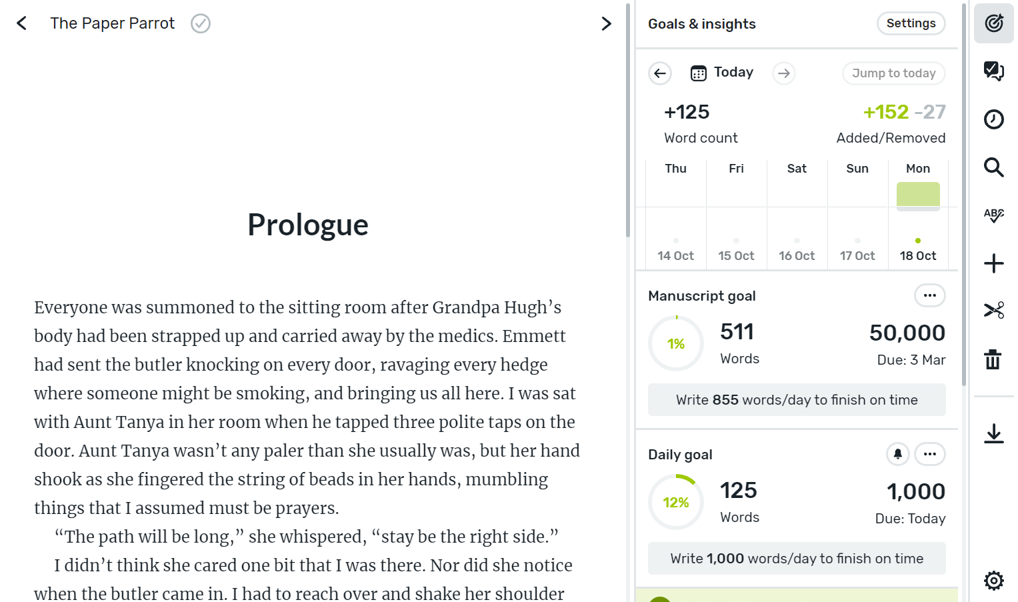
Reedsy Studio has goal-setting and reminder features that can help you keep up with a daily schedule — all for free!
Try the trusted Pomodoro technique
We’ve all had that kind of day where an email notification or a news alert pops up and derails our work groove. Writing is hard — it often relies on finding and maintaining a flow of words which can be difficult to recover once it is lost. If this is what you struggle with, then the Pomodoro technique might be just what you need.
Essentially, this method asks you to work in periods of 20-25 minutes, during which you shut out all distractions (turn off your social media notifications!) and just write. The Podomoro technique thus gives you the tunnel vision you sometimes need to focus and complete the writing task you have on hand.
If you find yourself in a rut, fear not! Here are 20 tips to beat writer’s block for you to try out.
6. Edit and rewrite with every tool at your disposal
Finally, learning how to write well has a lot to do with knowing how to edit. No first draft will be (or should be) ready to publish. Unless you are the world’s most efficient wordsmith, there will be things like grammatical errors, inconsistencies, inefficient turns of phrase, and passages that grate the ear. Having one or several rounds of self-editing and rewriting can help you polish your work and refine your thoughts.
Other than spelling and punctuation, some things to look out for when the time comes to review your work include:
- The structure and flow of your content;
- Use of passive voice instead of active voice;
- The sentence length (some maybe too long to be comprehensible).
We highly recommend signing up for our free course on how to self-edit your writing for a detailed look at the most common copy issues. And if you’re working on big projects, like a book, you should definitely work with a professional editor to make sure no weakness in your writing goes unnoticed.

Level up your manuscript with professional help
Connect with the industry’s top professionals on Reedsy
Learn how Reedsy can help you craft a beautiful book.
With these six tips, you can approach every piece of writing with a critical mind so that every project is a chance to up your writing skills and become a better writer. Remember that practice makes perfect — keep calm and carry on writing!







